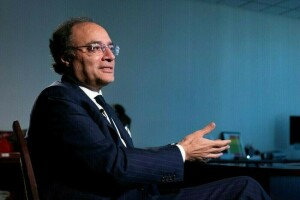The Indonesian rupiah rose sharply and other Asian currencies moved higher on Friday, buoyed by a yen rally, signs of a faster rise in the Chinese yuan and a recovery in emerging market assets in Europe and Latin America.
The rupiah pared losses sustained in the previous two sessions and was quoted as high as 9,030 per dollar, a gain of around 0.75 percent from Thursday.
The Chinese central bank set the mid-point of the yuan's exchange rate at 8.0170 per dollar on Friday, and the currency later climbed to 8.0168 - its highest level since last July's revaluation - suggesting authorities were encouraging a relatively faster appreciation.
The Malaysian ringgit hit 3.6830 per dollar, its strongest since abandoning a dollar peg in July, with traders citing the absence of central bank intervention and positioning before the government unveiled a five-year development plan as reasons for the rally.
Strong foreign portfolio flows into equity markets boosted the South Korean won and Taiwan dollar.
Traders speculated the yuan's pace of appreciation has picked up as Beijing tries to appease US politicians - who say an undervalued yuan is to blame for the loss of US manufacturing competitiveness - ahead of Chinese President Hu Jintao's visit to Washington next month.
"As Beijing shows an increasing willingness to let the yuan appreciate faster, Malaysia has also appeared more willing to do likewise, as a stronger yuan allows it to relax its grip on the ringgit without detriment to its relative export competitiveness," Su Sian Lim, economist with the Bank of Tokyo-Mitsubishi UFJ, said in a note.
Analysts at Goldman Sachs recommended investors buy the Singapore dollar, both as a proxy trade to exploit the likely yuan-inspired Asian currency appreciation as well as to position for a tighter monetary policy in Singapore.
The Sing dollar was however one of Friday's underperformers, staying steady around 1.6180/90 per US dollar.
EMERGING MARKETS:
The Philippine peso rose to 51.125 a dollar, recovering from the previous session's lows.
Analysts said the high-yielding rupiah and peso were benefiting from the rally in the currencies of Brazil, Turkey and Poland among other emerging market currencies after a sell-off over the past two weeks was seen as overdone.
The heavy selling had been driven by concern over simultaneous monetary tightening in the United States, Europe and other major economies and had helped drive the New Zealand dollar to 22-month lows on Wednesday.
"The underlying trend is clearly towards much tighter liquidity globally," said James Malcolm, a Deutsche Bank currency strategist.
But the reaction to that had gone too far, he said.
"There's been little spillover for Asia because it hasn't hit equity sentiment particularly hard and positions weren't particularly extended either," Malcolm said.
Malcolm also said that, while the rupiah and peso were relatively unscathed, he worried that central banks in those two countries would be loath to let their currencies rise further, unless there was broad strength in all the Asian currencies.
BR100
15,103
Increased By
140.9 (0.94%)
BR30
42,619
Increased By
540.8 (1.29%)
KSE100
148,196
Increased By
1704.8 (1.16%)
KSE30
45,271
Increased By
438.2 (0.98%)






















Comments
Comments are closed.